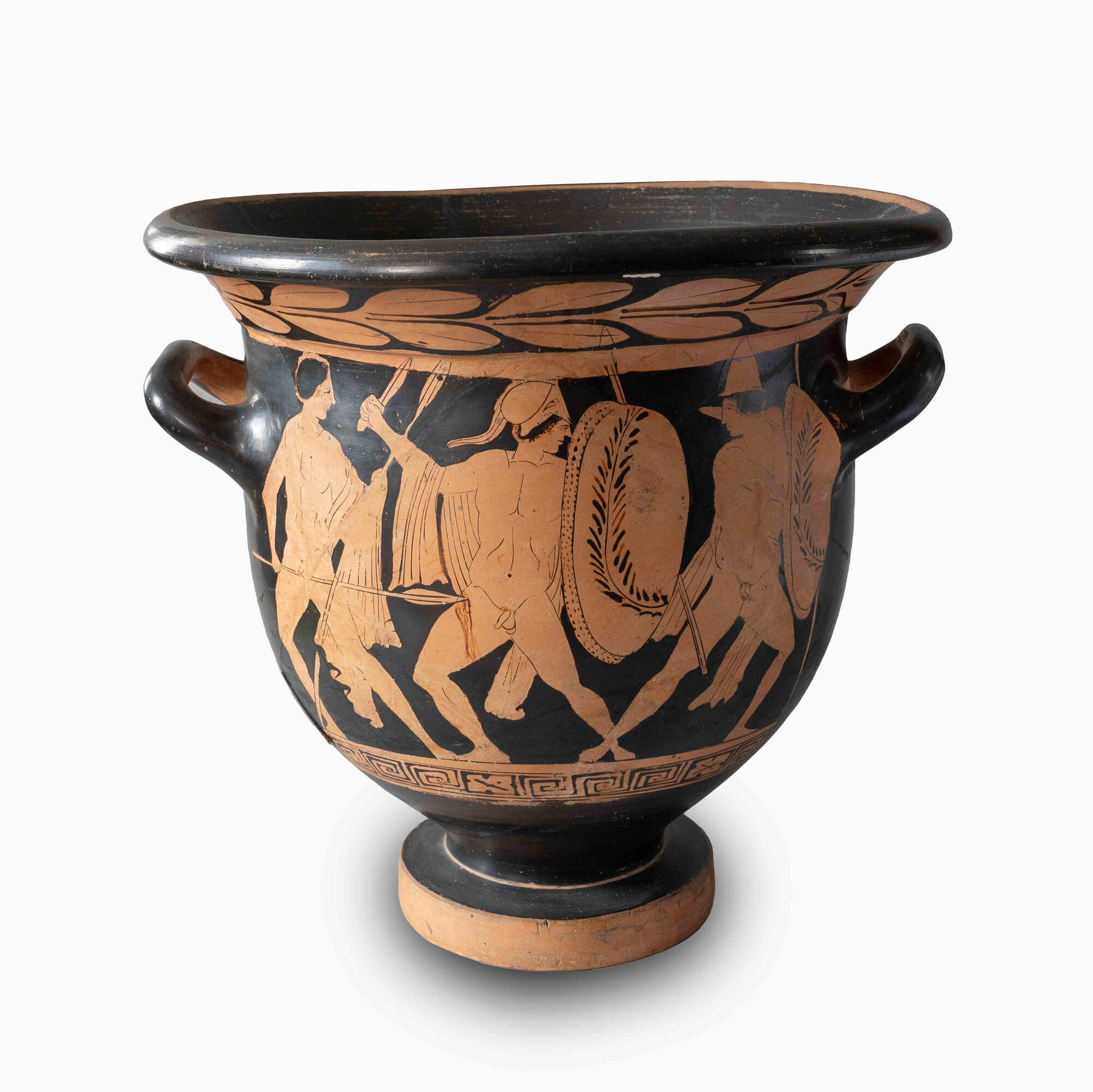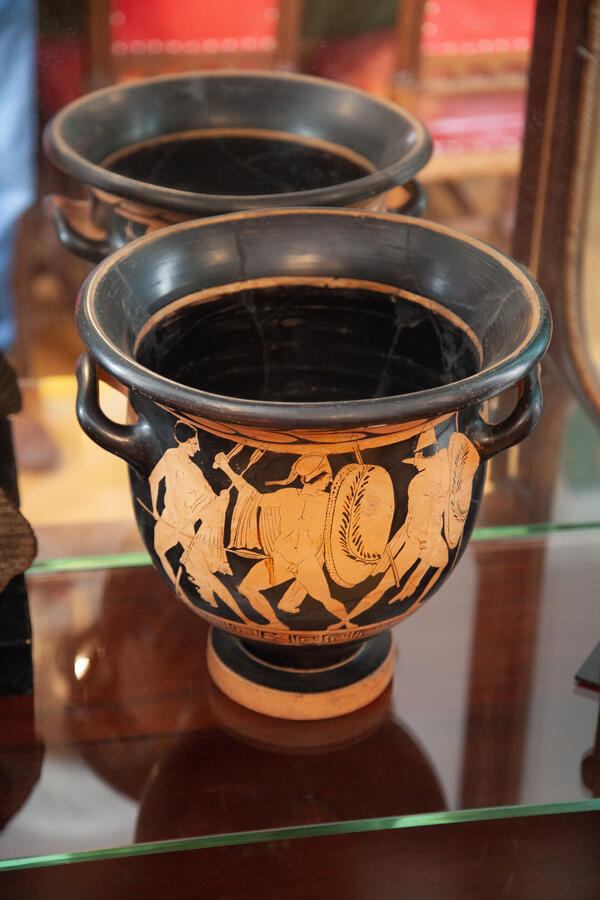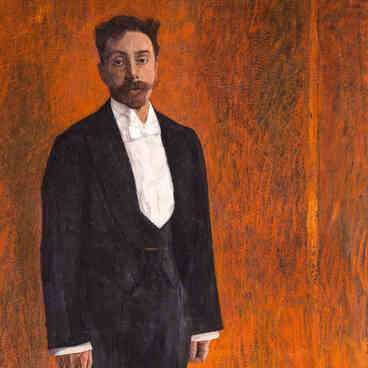The antiquities are one of the most interesting exhibits in Nikolai Semyonovich Golovanov’s collection. It includes a krater — an ancient Greek vessel. In the old times, vessels were used for storage, transportation, and also during spiritual practices.
These ancient vessels had various shapes, depending on their purpose. There are 20 main types, including amphora, calyx, lekythos, mastos, and krater. The krater type is characterized by a wide mouth, two handles on the sides, and a foot. The vessel was used for diluting wine with water. According to customs, the Hellenes mixed one part of wine with two parts of water: drinking undiluted wine was considered immoderate and barbaric.
Judging by the shape of the krater from Nikolai Golovanov’s collection, as well as its proportions, the type of ornaments and their arrangement, it can be said that the vessel was created relatively early — around the late 5th or the early 4th century BC. The krater might have been made in southern Italy, possibly in Apulia.
Apulia is a region in southern Italy, bordering the Adriatic Sea to the east and the Ionian Sea to the southeast. The region was named after the Apulian tribe. Between the 11th and the 10th centuries BC, the tribe moved to the territory of Apulia from the northern coast of the Adriatic Sea. Later, the Daunians also inhabited the area, giving Apulia its poetic name of Daunia. The clay krater from Nikolai Golovanov’s collection is covered with a black clay slurry and features several images of warriors.
From his early years, Nikolai Golovanov became fascinated with color, be it in paintings or music with its rich “picturesque” potential. Over time, he became an avid collector. When it came to collecting, especially paintings, the conductor demonstrated swiftness, vehemence, ambition and even a certain immoderation. It all started with reproductions and picture postcards, however, the photographs of Golovanov’s home, made in the late 1910s, already showed some sculptures and paintings, and by 1930 he also had icons. This is the story of how this fascinating and diverse collection of the chief conductor of the Bolshoi Theater, composer and musician Nikolai Golovanov came to be.
These ancient vessels had various shapes, depending on their purpose. There are 20 main types, including amphora, calyx, lekythos, mastos, and krater. The krater type is characterized by a wide mouth, two handles on the sides, and a foot. The vessel was used for diluting wine with water. According to customs, the Hellenes mixed one part of wine with two parts of water: drinking undiluted wine was considered immoderate and barbaric.
Judging by the shape of the krater from Nikolai Golovanov’s collection, as well as its proportions, the type of ornaments and their arrangement, it can be said that the vessel was created relatively early — around the late 5th or the early 4th century BC. The krater might have been made in southern Italy, possibly in Apulia.
Apulia is a region in southern Italy, bordering the Adriatic Sea to the east and the Ionian Sea to the southeast. The region was named after the Apulian tribe. Between the 11th and the 10th centuries BC, the tribe moved to the territory of Apulia from the northern coast of the Adriatic Sea. Later, the Daunians also inhabited the area, giving Apulia its poetic name of Daunia. The clay krater from Nikolai Golovanov’s collection is covered with a black clay slurry and features several images of warriors.
From his early years, Nikolai Golovanov became fascinated with color, be it in paintings or music with its rich “picturesque” potential. Over time, he became an avid collector. When it came to collecting, especially paintings, the conductor demonstrated swiftness, vehemence, ambition and even a certain immoderation. It all started with reproductions and picture postcards, however, the photographs of Golovanov’s home, made in the late 1910s, already showed some sculptures and paintings, and by 1930 he also had icons. This is the story of how this fascinating and diverse collection of the chief conductor of the Bolshoi Theater, composer and musician Nikolai Golovanov came to be.



